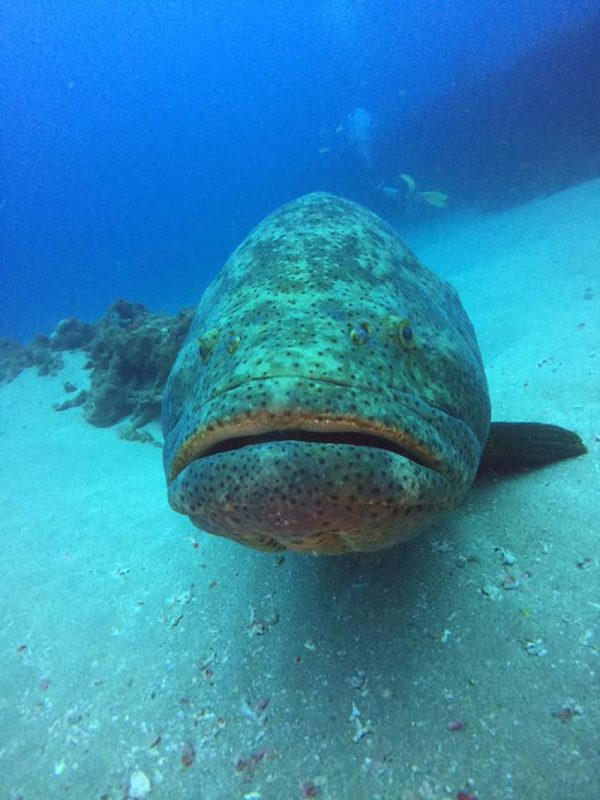
Summertime dive conditions should hold through the month of September as fall approaches, provided tropical activity remains low. Beneath the surface annual events such as the goliath grouper migration and the potential for jellyfish to show up will keep divers alert and on their toes throughout the month.
Hurricane season reaches its peak during September and divers should pay attention to the forecast for changing weather. Storms far out to sea may have minimal effect on land but these systems can drastically change the landscape beneath the surface. Large swells generated from tropical storms may shift huge amounts of sand or move wrecks into new positions allowing divers to explore fresh territory. After the seas calm down, diving can be really good after a storm since new reefs maybe uncovered after, along with grouper, lobster and large whelk and helmet conch shells scattered over the reef. The Georges Valentine wreck that sits just a few hundred yards offshore of the House of Refuge is a great example of how a dive site may be affected by tropical activity. As sand shifts with each swell, water depths on the wreck maybe as deep as 20 feet or as shallow at 10 feet, depending on the time of year.
During the fall, our area plays host to the largest gathering of goliath grouper in the world. As most boaters are aware, most artificial structures in our area have year-round resident populations but during the annual aggregation 30 or 40 individuals on a single wreck are common. Divers can count on these underwater giants to arrive in early September and hang around reefs and wrecks for a month or more. Special trips are organized by local dive operators to take advantage of this unique spectacle and divers are encouraged to bring cameras to document their encounters. Considered to be a must-dive by many this time of year, locations such as the Evans Crary Bridge rubble or David-T in Stuart, the Esso Bonaire of Jupiter or the new Ana Cecilia Wreck in West Palm are hot spots for experiences available nowhere else in the world.
Another common animal divers may encounter this time of year are jellyfish. Every year, large pink moon jellies drift past area beaches providing an uncomfortable reminder of how the ocean is constantly changing. Concentrations of jellies are usually light and easy to avoid but thick plumes have been reported in years past. Divers can avoid being stung by wearing exposure protection such as wetsuits, hoods and gloves and paying close attention while ascending and descending since jellies usually hang in the upper part of the water column. First aid kits should include vinegar, anti-itch creams or sprays and Benadryl in case of contact with these guys. Another helpful trick when having to ascend through a layer of jellies is to purge a regulator to release a large burst of bubbles. The rising bubbles will punch a hole through the layer and allow divers to come up unscathed.
Locals know lobster season is open and many of the egg-bearing females that were passed over last moth may have had time to drop their eggs. This means that there can still be plenty of big lobsters caught in shallow water near shore. Grab a camera, lobster snare and join the action!
FORECAST BY: Steve Wood
Deep Six Watersports – Stuart
(772) 288-3999 Stuart
(772) 562-2883 Vero
Email: Steve.wood@deepsix.com
Website: www.deepsixintl.com




